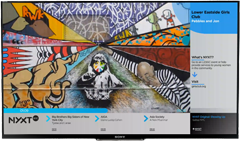June is Pride month here in New York City, which is a time to celebrate and to reflect on the people and events that have helped to further LGBT rights and shape the community’s culture. For many people, the Stonewall Riots of 1969 are the first thing to come mind when thinking about LGBT history in New York City. Although we do understand and recognize the importance of that extremely significant event, plenty of lesser-known history took place in New York City about a hundred years before the riots. Most of these events and figures are not documented as well as Stonewall, but their contribution to human rights and the LGBT community made an incredible impact.
Read on to learn about some important places and people, and how the movement formed before Stonewall.
1850s - 1860s
Going back over 150 years, the movement can be traced back to a bar called Pfaff’s, a hangout for writers, actors, and artists. At this bar is where Walt Whitman wrote, and soon his poems were collected and published in Leaves of Grass. Whitman became famous for being one of the first people to openly publish homoerotic poetry, writing about men loving men.
Around this same time, actress Charlotte Cushman came to fame on British and American stages while living with her famous sculptor lover, Emma Stebbins. Cushman, Stebbins, and other female artists formed same-sex relationship, known as a group of “female jolly bachelors,” and dominate the arts scene. Cushman’s life would later be featured in Louisa May Alcott’s Jo’s Boys.
1880s
Famed photographer Alice Austen spent much of her life taking photos at her grandfather’s farm named Clear Comfort on Staten Island. Her photographs include images of women embracing, dancing, laying in bed, and cross-dressing. These photographs were unique at the time, eventually becoming iconic for the LGBT community in New York City and worldwide. On June 20, 2017, the home—now called the “Alice Austen House”—will be formally designated as a national site of LGBTQ history.
1890s - 1900s
Around this time, the word “fairies” came to describe homosexual men, and Bowery became a hangout that hosted “fairy resorts” in south Manhattan. There were a few other bars that openly hosted gay men, such as The Black Rabbit, which was raided in 1900.
1910s - 1920s
During the early 20th century, Webster Hall became a gathering place for the LGBT community in NYC. The grand hall would host balls where attendees were welcome to dress in drag.
In 1923, Elsa Gidlow published possibly the first openly lesbian poems, On a Grey Thread. And, during this same time, the South Village became one of the first New York neighborhoods to allow an open gay and lesbian presence.
1930s
In the 1930s, the Apollo Theater was thriving. Many openly gay African American performers entertained here, including legends such as Alberta Hunter and Ethel Waters.
1940s
In 1945, after LGBT personnel were discharged from military service, the first social welfare program for gay people was opened, though this group was eventually disbanded due to internal disagreements. At the same time, the 181 Club, dubbed “the homosexual Copacabana,” was gaining attention due to its luxurious and high-class features. 1940s was also the time that openly gay jazz musician Billy Strayhorn produced classics such as Take the A Train and Lotus Blossom.
1950s
In 1956, James Baldwin published Giovanni’s Room to great praise; the book features a gay male narrator. And in 1959, Lorraine Vivian Hansberry because the first African American woman to write and perform a play on Broadway (A Raisin in the Sun).
1960s
In 1962, the first pro-LGBT radio program aired in New York City. This was a 90-minute special with Randy Wicker. In 1966, New York Mattachine Society staged a “Sip-In,” which challenged the law forbidding bars from serving gay men and women. The law was revoked the next year, which was the same year that Craig Rodwell opened the first gay bookstore in Greenwich Village, the ‘Oscar Wilde Memorial Bookshop.’
All of these monumental events came before the influential Stonewall Riots, protesting a police raid of Stonewall Inn. There are countless individuals who helped fight for Gay Rights, and this is the month we celebrate those who acted openly and those who acted behind the shadows to help move the movement forward.
To learn more about queer history and culture here in New York City and around the world, stop by New York’s Lesbian, Gay, Bisexual & Transgender Community Center. The Center offers a permanent artwork collection, a historical LGBT document archive and library, and the Bureau of General Services - Queer Division, offering artistic programming like readings, performances, book discussion groups, film screenings, workshops, and more.
Sources:
https://www.nyclgbtsites.org/
http://aliceausten.org/news/
https://en.wikipedia.org/wiki/Timeline_of_LGBT_history_in_New_York_City
http://www.nyc.gov/html/lpc/downloads/pdf/LGBT-PRIDE_2014.pdf
Subscribe to the NYXT newsletter
Learn about upcoming events, volunteer opportunities, and new organizations looking for your help.


